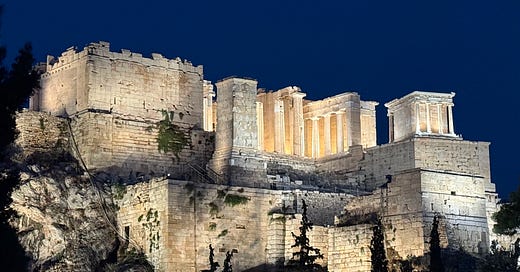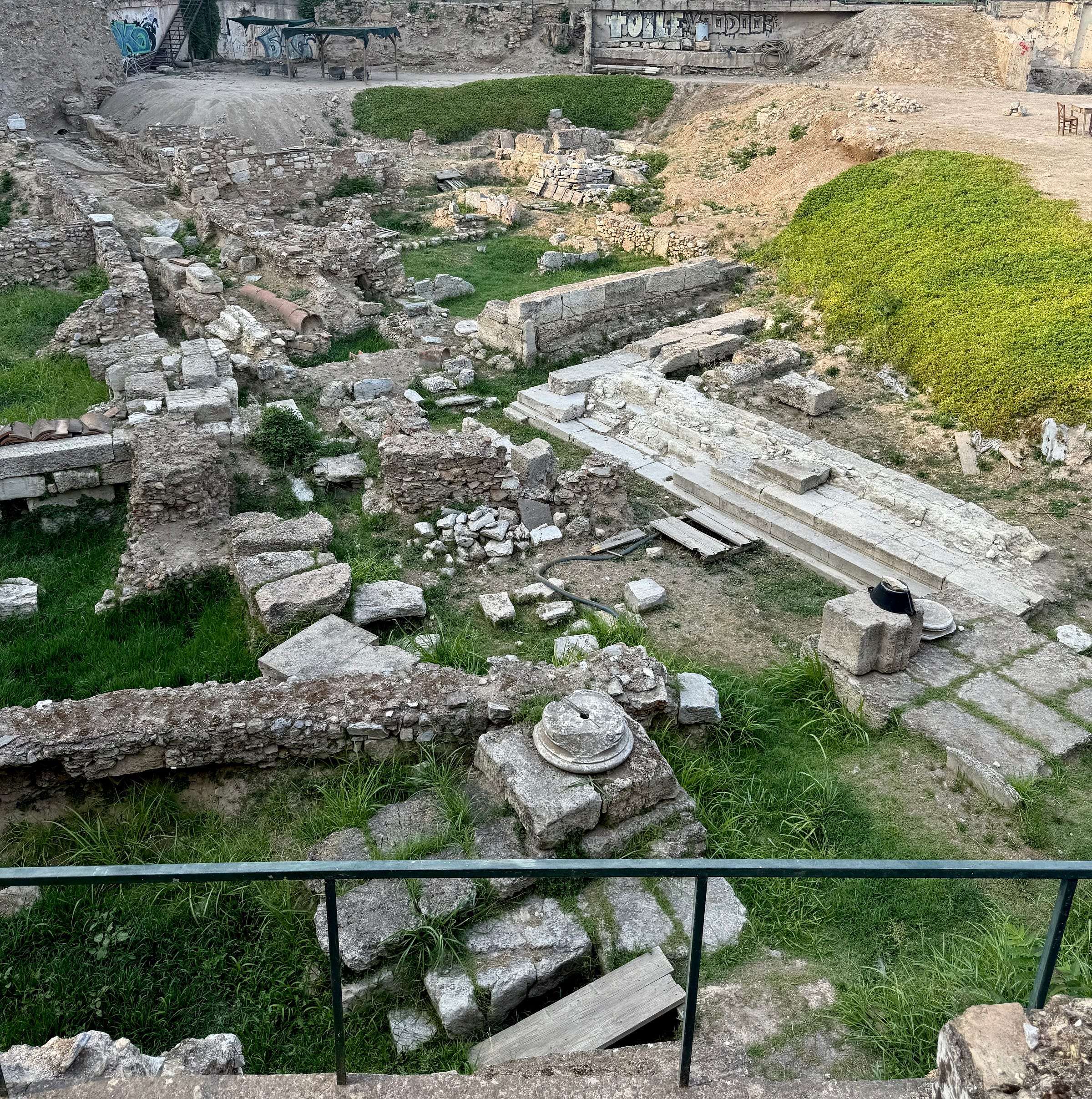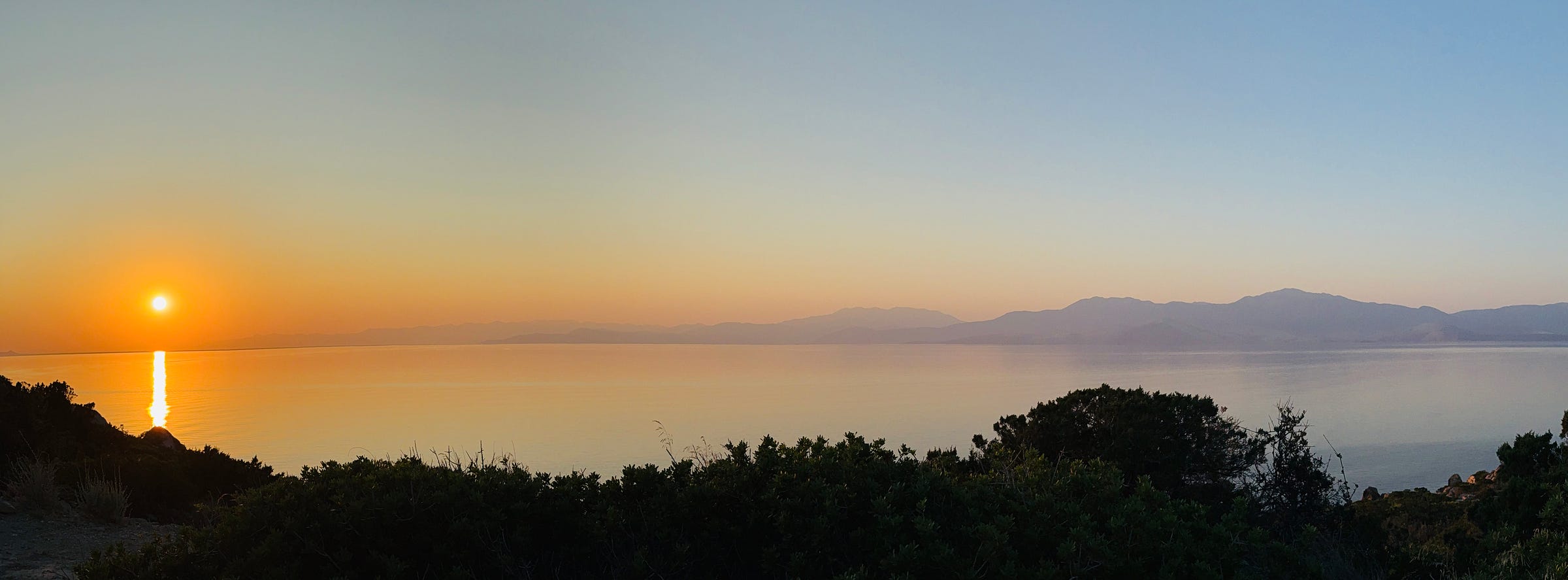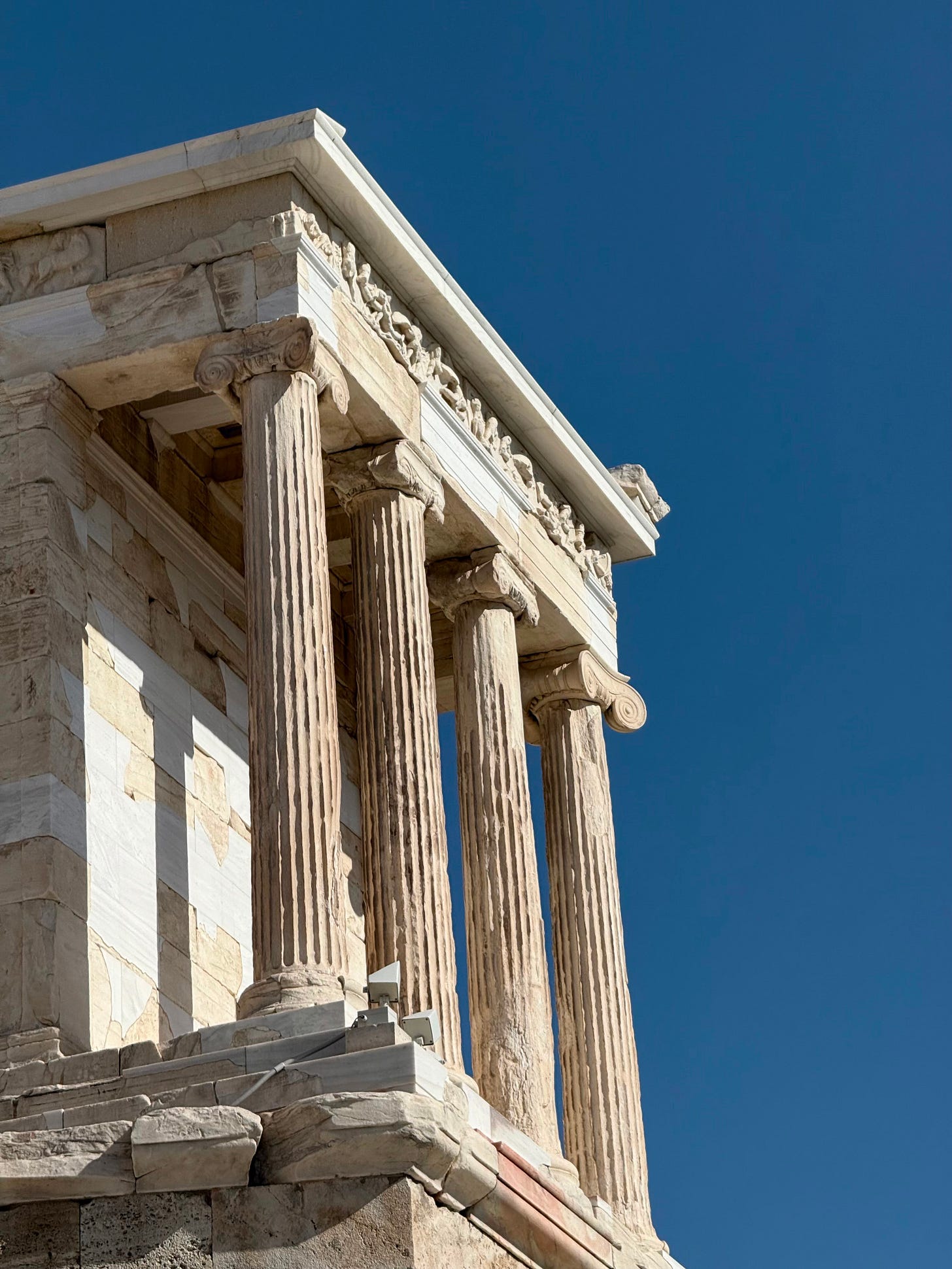Reading "Beyond Stoicism"...in Athens
“Eudaimonia describes the 'life worth living' that results from one’s analysis of telos and human nature.” - Beyond Stoicism
I just finished a workshop in Athens, Greece with Massimo (MBF) and Meredith Alexander Kunz, two of the three authors of Beyond Stoicism: A Guide to the Good Life with Stoics, Epicureans, Skeptics and Other Ancient Philosophers (2025). In the workshop, many familiar proficientes who come to Massimo’s Stoa Nova workshops, and I read, discussed, and sailed (to use the book’s metaphors) our way through the many Greco-Roman practical philosophies and considered how these philosophies might fit into modern life or everyday practice.
Reading and listening to the audiobook before and during the workshop while wandering around the neighborhood of Plaka, gave an immediacy to the material that explores not just theory, but how these philosophers and their students might have lived and pursued knowledge on the streets, on porches, in gymnasiums, and in gardens.
The Hellenic philosophical traditions explored in this book–Cyrenaicism, Epicureanism, Aristotelianism, Platonism, Stoicism, and Skepticism to name a few–were meant to be practiced and engaged with as much as they were to be understood. I like the book’s focus on the individual desire to make progress within the various philosophies, to go beyond the enormous, larger than life figures we associate with them.
Like the ancient society these philosophies of life came from, the book is to be visited via ports: the Port of Pleasure, the Port of Character, and the Port of Doubt. While a timeline of philosophers’ lives and relevant events offers a chronological overview, the philosophies here are not explored chronologically but rather by emphasis. Each chapter opens with a story of a philosopher (not always famous) and progresses to descriptions and explorations of the major ideas espoused by the different schools. Like Massimo and co-author Greg Lopez’s previous book, A Handbook for New Stoics, each chapter contains practical exercises involving journaling and other self-assessments to demonstrate how these philosophies might be explored in the context of our modern lives
The Port of Pleasure begins with Aristippus the Cyrenaic whose approach to pleasure shows us how we might identify our desires and pleasure and, importantly, how we begin to think of time; with Epicurus, we learn about friendship and ataraxia and how to categorize and understand desires. In the Port of Character, Aristotle challenges our notions of virtue and personal responsibility; Hipparchia the Cynic challenges us to understand what freedom is and how to resist societal demands and give up our invented prisons of shame; with Epictetus, we learn about the Stoic concepts of “living according to nature,” reason and pro-sociality, which we explore further with Plato, assessing our responsibility toward building a more just society. The Port of Doubt tackles logic and method a bit further with Pyrrho, Carneades, and Socrates. The exercise in the final chapter implements Hypatia’s ancient astrolabe. We zoom out to the “view from above” and consider how we’ve internalized this material.
This method of reading through these ideas offers a sense of how these traditions emerged of each other, directly or indirectly. Like the approach Cicero takes in De Finibus, by comparing philosophies side by side, thinking about which virtues were most highly valued by the different schools, also makes the virtues themselves (Justice, Courage, Wisdom, Temperance) clearer. I had a better sense, after exploring the other traditions practically, how the virtues, disciplines, and practices developed in Stoicism emerged in their context and were honed and challenged to become what they became then as well as what they mean to us now.
For me, the philosophical soap opera of schools challenging each other and competing for students (most often young men) in real time on the streets of ancient Athens and Rome adds to the understanding of how these philosophies were formed by day-to-day life. Philosophers were perhaps the “influencers” of their time. Crates is outraged when Zeno of Citium (future Stoic) defects to Stilpo the Megarian. Socrates uses the Sophists to demonstrate his own ideas of moral obligations to truth and to teaching. In the workshop, we discussed the well-known account of philosophers being sent from Athens to Rome and the perceived threat of these philosophers and their followers by those in power. The supposed danger of an educated public feels depressingly…. contemporary.
Many of these philosophers spoke out against tyrants or tyrannical rule as acts or obligations of character. Their philosophies developed as part of their daily lives amid political upheavals and extremes and even tyranny. Many, like Socrates and Hypatia, paid with their lives. When things fall apart, we learn here, we can act and use the principles we’ve taken the time to cultivate and maintain with more care the one thing no one else or no system can touch: our character.
Thanks for reading,
Jennifer







